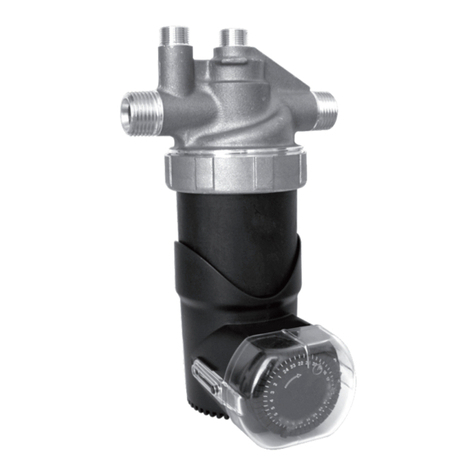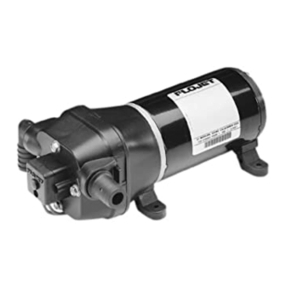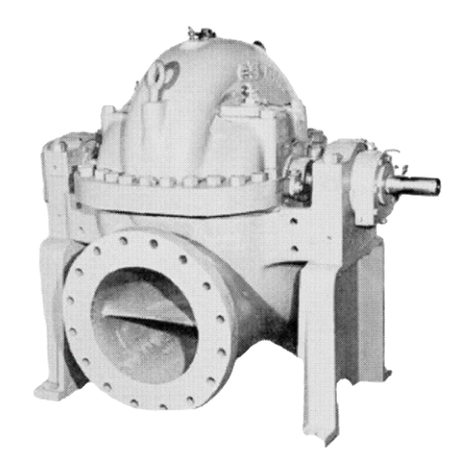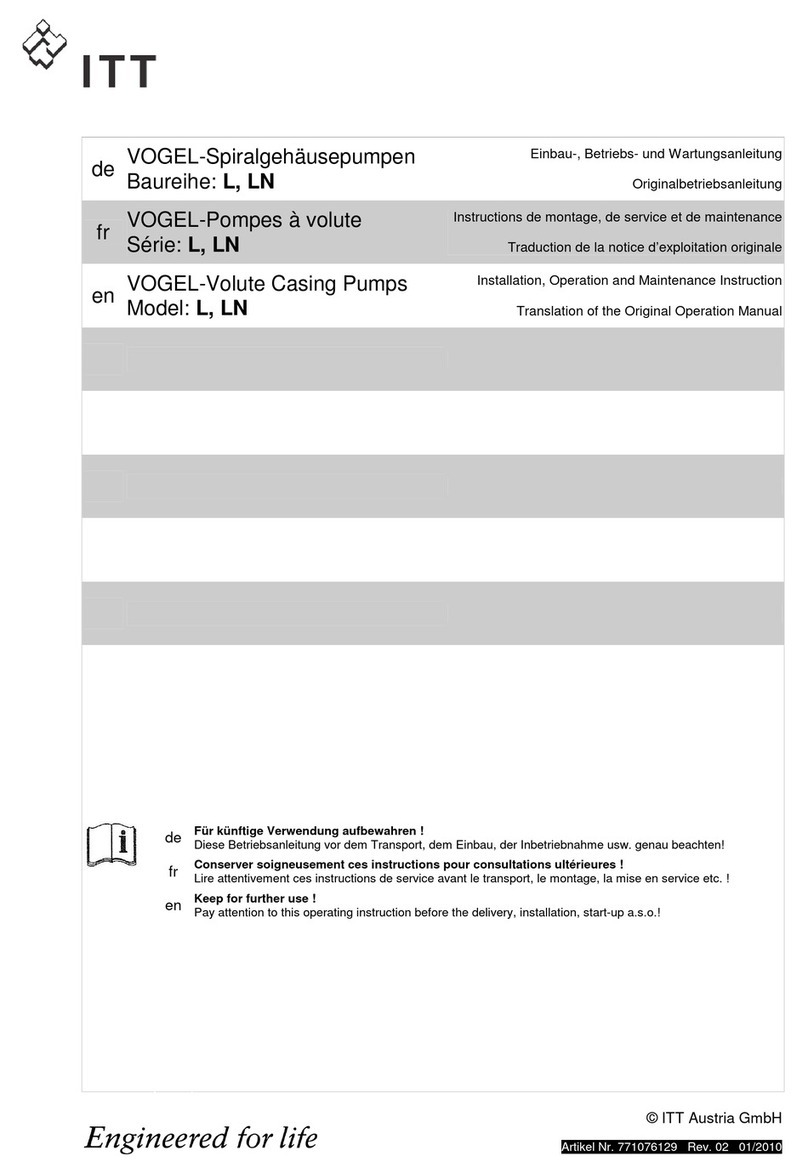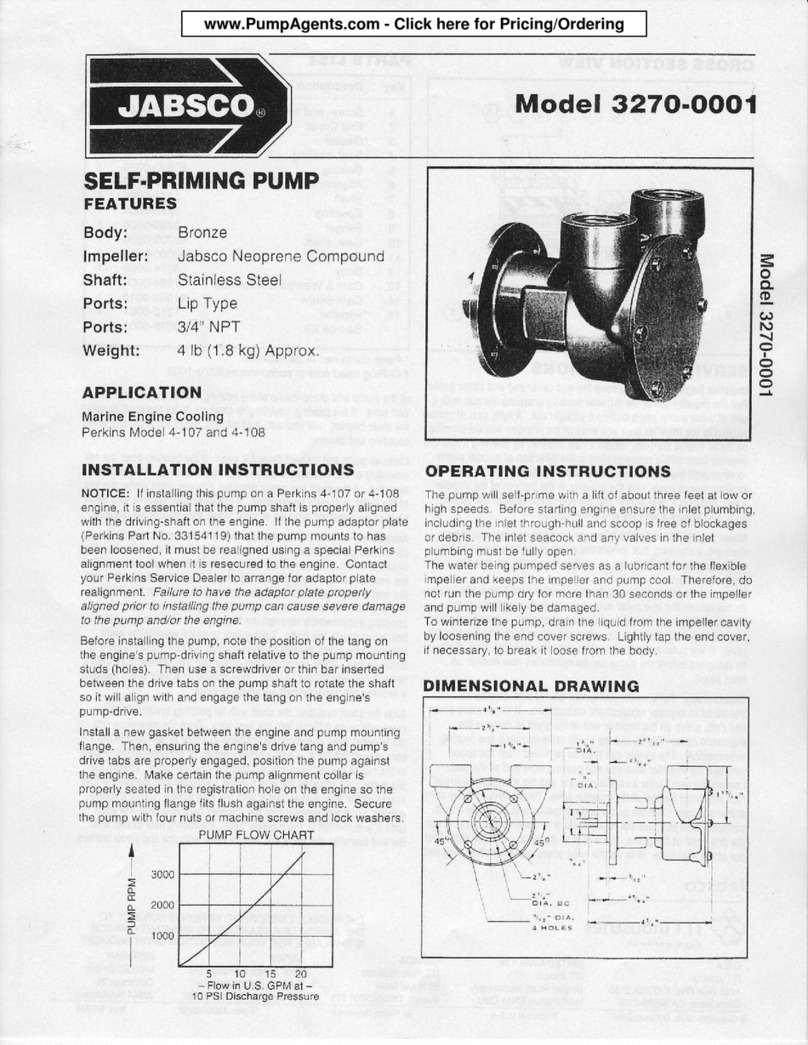
4.6.2 Suction-piping checklist.................................................................................................................33
4.6.3 Discharge piping checklist.............................................................................................................35
4.6.4 Bypass-piping considerations .......................................................................................................35
4.6.5 Auxiliary-piping checklist ...............................................................................................................36
4.6.6 Final piping checklist .....................................................................................................................36
5 Commissioning, Startup, Operation, and Shutdown ...................................................................................37
5.1 Preparation for startup............................................................................................................................. 37
5.2 Remove the coupling guard .................................................................................................................... 38
5.3 Check the rotation ...................................................................................................................................39
5.4 Couple the pump and driver .................................................................................................................... 39
5.4.1 Coupling guard assembly..............................................................................................................40
5.5 Bearing lubrication................................................................................................................................... 45
5.5.1 Oil volumes ...................................................................................................................................45
5.5.2 Lubricating-oil requirements..........................................................................................................46
5.5.3 Acceptable oil for lubricating bearings ..........................................................................................46
5.5.4 Lubricate the bearings with oil.......................................................................................................46
5.5.5 Replace the oil filter.......................................................................................................................47
5.5.6 Lubricate the bearings with pure or purge-oil mist (optional) ........................................................ 49
5.5.7 Lubricate the bearings with pressurized lubrication ...................................................................... 51
5.5.8 Thrust Bearing Cooling Fan (Optional) .........................................................................................52
5.5.9 Lubricate the bearings after a shutdown period ............................................................................53
5.6 Shaft sealing with a mechanical seal ...................................................................................................... 54
5.7 Connection of sealing liquid for mechanical seals................................................................................... 54
5.8 Pump priming ..........................................................................................................................................55
5.9 Prime the pump with the suction supply above the pump ....................................................................... 55
5.10 Start the pump.......................................................................................................................................56
5.11 i-ALERT®2 Equipment Health Monitor..................................................................................................57
5.12 Pump operation precautions ................................................................................................................. 57
5.13 Shut down the pump ............................................................................................................................. 58
5.14 Deactivate the i-ALERT®2 Equipment Health Monitor..........................................................................58
5.15 Make the final alignment of the pump and driver .................................................................................. 59
5.16 Doweling the pump casing ....................................................................................................................59
5.16.1 Installing the driver ......................................................................................................................60
5.16.2 Doweling for low differential temperature service .......................................................................60
5.16.3 Doweling for high differential temperature service ......................................................................61
6 Maintenance.....................................................................................................................................................64
6.1 Maintenance schedule ............................................................................................................................ 64
6.2 Bearing maintenance .............................................................................................................................. 65
6.3 Mechanical-seal maintenance................................................................................................................. 65
6.4 Disassembly ............................................................................................................................................ 66
6.4.1 Disassembly precautions .............................................................................................................. 66
6.4.2 Tools required................................................................................................................................ 66
6.4.3 Prepare for disassembly ...............................................................................................................67
6.4.4 Disassemble the radial end (ball bearing pumps) .........................................................................68
6.4.5 Disassemble the thrust end (ball bearing pumps).........................................................................69
6.4.6 Disassemble the radial end (sleeve/ball bearing pumps)..............................................................71
6.4.7 Disassemble the thrust end (sleeve/ball bearing pumps) .............................................................73
6.4.8 Disassemble the radial end (sleeve/tilt pumps).............................................................................75
Table of Contents
2 3620 i-FRAME API type BB2 single stage / ISO 13709 2nd Ed/API 11th Ed Installation, Operation, and Maintenance
Manual
